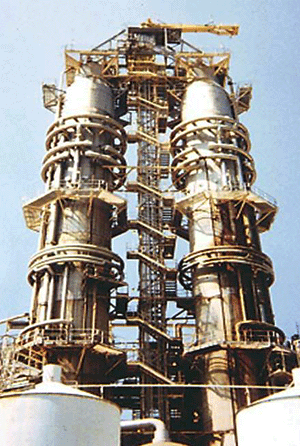Pulping and Bleaching for Specific Grades Explored at 2013 PEERS Conference
 Print this article | Send to Colleague Print this article | Send to Colleague
 The 2013 TAPPI PEERS Conference in Green Bay, Wis., USA, September 15-18, focuses on advances and emerging developments in the kraft pulping and bleaching arena as well as the chemical recovery island. In the pulp bleaching area, Session 14 on Tuesday, September 17, from 10:30 a.m. – noon, examines pulping and bleaching for specific paper grades, with reports on some of the industry's latest approaches to cooking and bleaching of kraftliner, newsprint, and other printing and writing paper grades.
In the first of three papers in this session, Stefan Antonsson of Metso Sweden AB makes a "Comparison of Cooking Technologies for Production of Softwood Kraftliner Pulp." As Antonsson notes, for many years pulping development for kraftliner has been limited, possibly due to corrugated board standards in many countries having specified basis weight and not strength demands on the corrugated board. With the modifications of Item 222/Rule 41, the situation in the U.S. has changed. Recently, Antonsson says, a new cooking technology has been developed enabling defibration of softwood pulps at considerably higher kappa number with low reject content. Pulp quality as a function of kappa number has been evaluated for this new cooking technology compared with pulp produced using a conventional kraftliner cooking technology. Lower H-factor demands and increased strength, measured as tensile energy absorption, were the most important differences found between the two cooking systems in this study, Antonsson points out.
In the second paper of Session 14, Sankaralingam Pichandi of Tamilnadu Newsprint and Papers examines Casuarina pulp bleaching. Pichandi details how Tamilnadu was able to improve pulp bleachability without affecting pulp strength properties, optical properties, or physical properties, while improving effluent characteristics.
In the session's third presentation, Douglas Reid of AkzoNobel reports on "The Contribution of Pulp Brightness and Optical Brightening Agents to Paper Whiteness." As Reid explains, the desired optical properties of a paper can be achieved through a variety of tools: pulp brightness, optical brightening agents, dyes, or filler qualities. "In this work, we explore the interaction between pulp brightness levels and optical brightening agents (OBA) addition on paper whiteness. Papers were prepared using eucalyptus and softwood kraft pulps bleached to three different brightness levels. The addition of OBA was evaluated as a wet-end only application and as a wet-end/size press application. We found that the initial brightness of the pulp furnish sets the limit for whiteness level achievable with OBA during papermaking. Additionally, in this work, we surveyed the optical properties of a range of commercially available papers. We also evaluated the economics of pulp brightness and OBA addition to show how these two variables can be balanced," Reid says.
|
|

